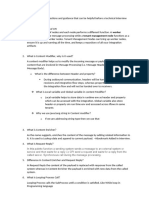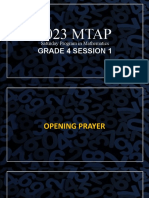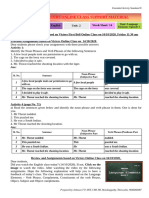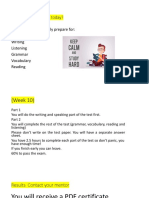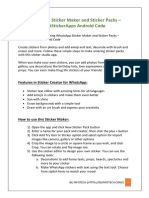0% found this document useful (0 votes)
16 views4 pagesBasic
The document provides a comprehensive overview of basic SAP CPI interview questions and answers, covering key concepts such as SAP CPI, iFlows, components of the SAP Integration Suite, adapters, and various functions like Content Modifier, Router, and Message Mapping. It also discusses error handling, message monitoring, and testing iFlows, along with the use of Groovy scripts in CPI. This resource serves as a guide for candidates preparing for interviews related to SAP Cloud Platform Integration.
Uploaded by
j barath kumarCopyright
© © All Rights Reserved
We take content rights seriously. If you suspect this is your content, claim it here.
Available Formats
Download as PDF, TXT or read online on Scribd
0% found this document useful (0 votes)
16 views4 pagesBasic
The document provides a comprehensive overview of basic SAP CPI interview questions and answers, covering key concepts such as SAP CPI, iFlows, components of the SAP Integration Suite, adapters, and various functions like Content Modifier, Router, and Message Mapping. It also discusses error handling, message monitoring, and testing iFlows, along with the use of Groovy scripts in CPI. This resource serves as a guide for candidates preparing for interviews related to SAP Cloud Platform Integration.
Uploaded by
j barath kumarCopyright
© © All Rights Reserved
We take content rights seriously. If you suspect this is your content, claim it here.
Available Formats
Download as PDF, TXT or read online on Scribd
/ 4





















